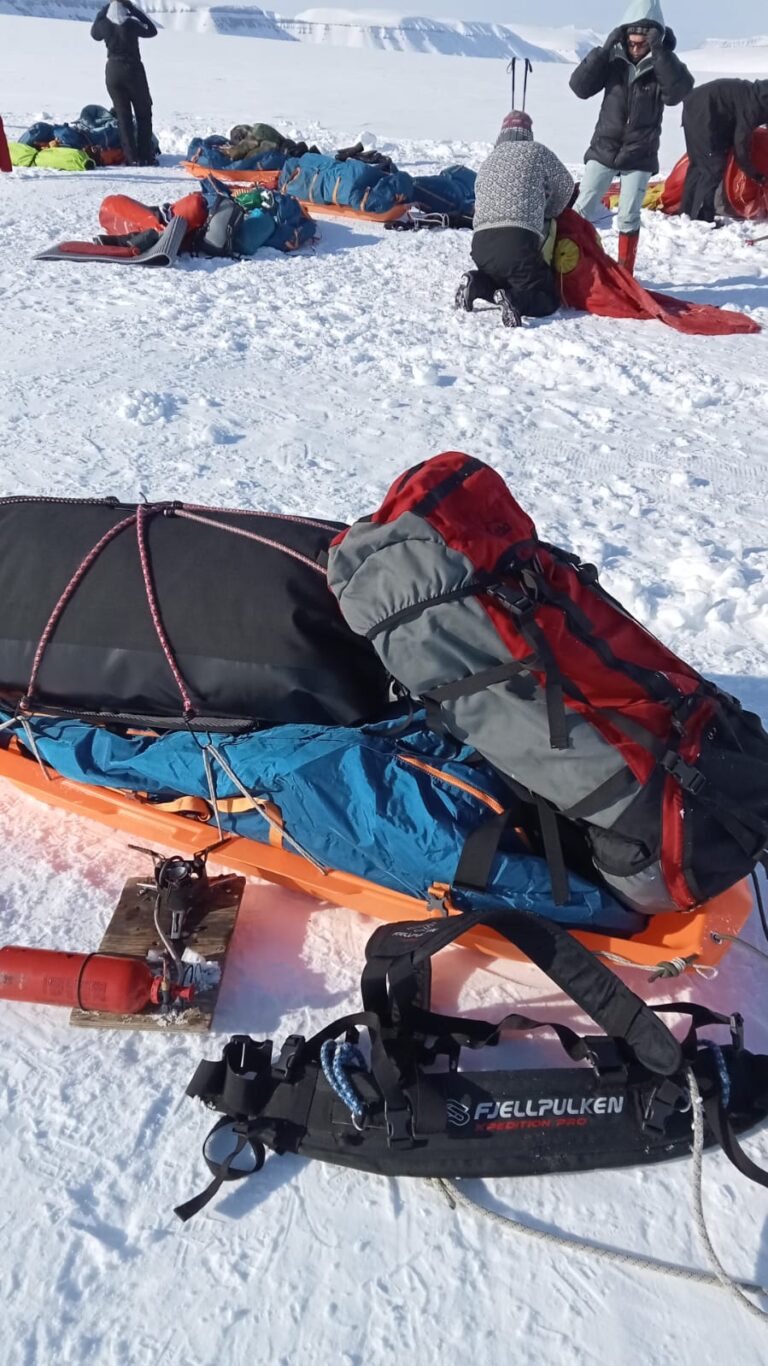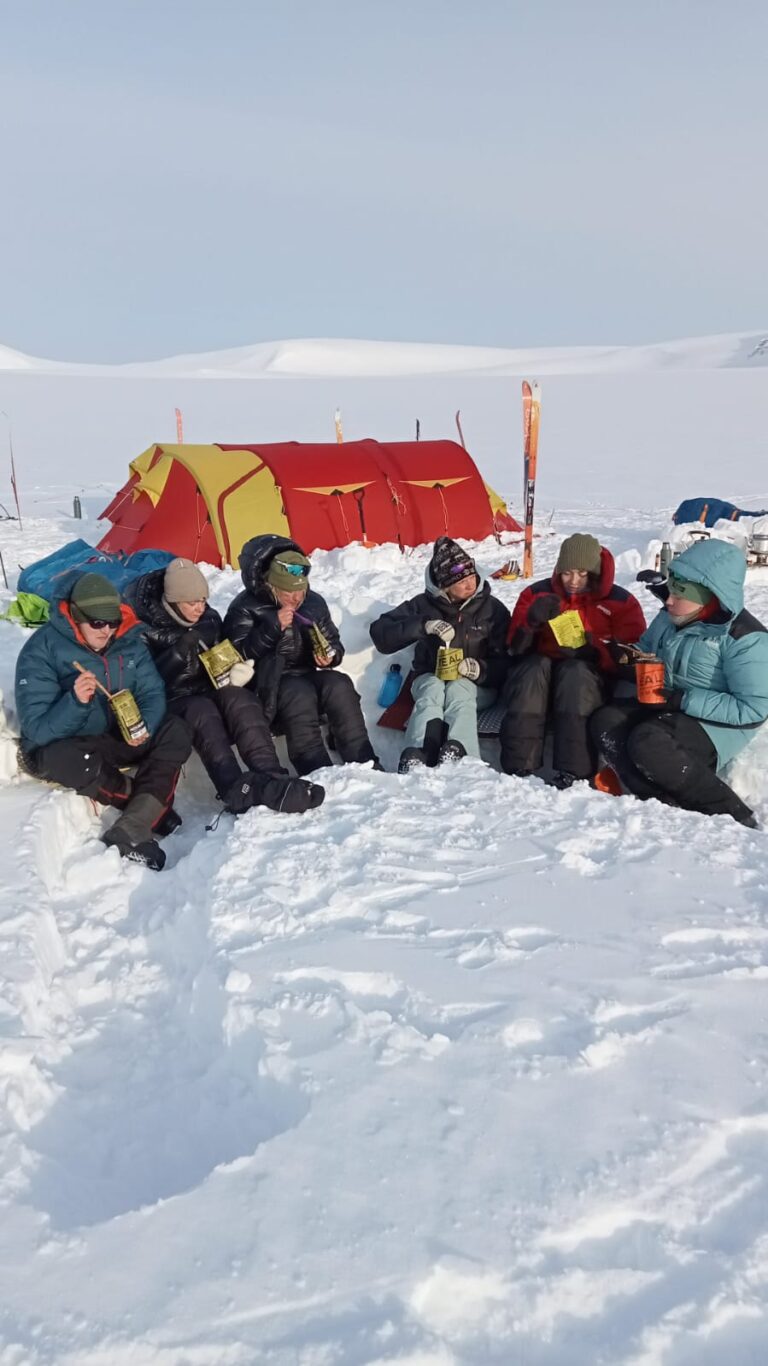How I Slept Without a Sleeping Bag, Only with a Duvet and Beach Mats, in the Arctic Wilderness of Svalbard 🥶🛷❄️
🧗♂️ Although I’ve been a mountaineer my whole life, I never slept in a tent during winter.
The reason? I can’t stand sleeping bags. They’re too tight, too restrictive; I can’t hold anything in my arms or between my legs—and I simply can’t sleep without pillows.
🇨🇭 That was until one day in the Randa campsite (near Zermatt), where a mountaineer friend with hundreds of nights in tents showed me… a duvet! He and his wife were really happy with it as a summer alternative to a sleeping bag. Back then, I had no idea that this moment would completely change my winter mountaineering life.
💸 I found the manufacturer, Nahanny, but when I heard the price—300 EUR—I gave up. “What, can’t I find a blanket for 30 EUR?” I thought. But something kept bothering me: why was my friend so excited about it? So I ordered it. Pure curiosity. I didn’t even know what down was back then.

It was pure magic! I slept with it during winter
- In a tent
- In attics, on hay
- On a balcony, in a hotel in Arosa
- In the snow, without a tent
- Near a hotel in St. Moritz
And one night, in a car, on Bernina Pass at 2328m, at -9°C, only in a t-shirt and shorts.

🧘♀️ About two years ago, I attended a course held by the Monroe Institute—research and practice in expanded consciousness (Hemi-Sync)
There, a colleague was sitting barefoot on cold tiles and told me she was following the Wim Hof method—intense breathing, cold exposure, mindset.
📚 I read the book, started the practice, and since then… Almost every evening in winter, I immerse myself for 5 minutes in the garden pool, just a few degrees above freezing — so the neighbors don’t see me and think I’ve lost my mind.
🌍 As a child, I loved Jules Verne. Ice, polar bears, explorers… So I thought: why not me?
📩 I contacted the Norwegian company Ousland—serious expeditions in Greenland. All good until I told them I was coming with a duvet. STOP. “No chance, it’s too risky, you’ll ruin the entire expedition. Everyone must have a sleeping bag.”
By the way, I highly recommend the Hemi-Sync seminars held by the Monroe Institute and the Wim Hof Method.

🤔 I was still wondering: were they right?
They are professionals. But… I had never been cold! I drew the line: if I slept in a t-shirt at -9°C, I must know something.
📍 That’s how I ended up with Hurtigruten, the largest Norwegian company organizing expeditions in Svalbard—near the North Pole. I chose: 🎿 Skiing across the Arctic Wilderness – 4 days on skis, pulling sleds, sleeping in tents, in the Arctic wilderness.
🗣️ I told them upfront that I was coming with a duvet. To my surprise, they didn’t say no, just recommended the sleeping bag. They accepted me! 🎉
🏋️♂️ I took:
2 rubber tires for training (pulling on snow & rocks)
A 10-entry pass to the cold room: -84°C, 4 minutes in shorts, hat, gloves, and socks. I would have liked more, but “it’s not allowed” 😄

👥 The team
Four women from Norway, one from Geneva, one from Chamonix, and me from Zurich.
Guide Jakob and guide Vilde: 100% professionals, friendly, explained EVERYTHING to us.
🧊 I learned that polar bear guarding is mandatory by law. Everyone took guard shifts for 1.5 hours each night. I had the 5:00–6:30 shift. I had a pistol, 3 warning shots, and a rifle for extreme cases.
🐾 Last “night” (it was light 24/7), we were told to be more vigilant: we were approaching a fjord where polar bears roam, looking for fish.
🚡 We traveled 100 km by snowmobile, then pulled sleds on skis for 4 days, then another 100 km back by snowmobile. Everything was super organized. The snow melted, the expedition food (Turmat) was heated, and we slept in 3-person tents. I asked for a tent just for me, also a 3-person one.
🔦 Before setting up camp, we checked the area with a crevasse probe: 10 meters long, between skis, left, right, forward—step by step.
🛏️ And yes… I slept WITHOUT a sleeping bag.
Only with:
🛌 Nahanny duvet 220x220cm with cover and thin underlay
🧘♂️ 2 old beach mats about 30 years old
👕 A long worker’s shirt and a puffy jacket, both from Hornbach

🌙 How did I settle in the tent in the evening?
I laid out the beach mats
A blanket over them
The duvet, taken out of its compression bag (it initially looked like a mess)
I crawled fully dressed under the duvet
I spread the down with my feet and hands, lifting the duvet in the middle
When I started getting hot, I took everything off: jacket, puffy jacket, ski pants, hat, socks
I stayed in the shirt and thermal underwear, with nothing else
Under the duvet, I kept my clothes for the next day to keep them warm
I made a “breathing tunnel” with one hand in the duvet—adjustable! The 2 extremes: very warm air, maybe 18°C under the duvet, or very cold air from the tent.
If I was hot, I’d stick my fingers out. If I was cold, I’d wrap my feet in the duvet.
🌡️ The lowest temperature one night: -26°C. Otherwise, it was around -15°C.
🎿 Many times, I was skiing with the Hornbach shirt and puffy jacket—no cold, no sweating.
🧤 The down gloves from Nahanny
Another wonder. I had them last year in Greenland, during an expedition on the polar ice with a tent. An Eskimo saw them and said, “Keep them, they’re better than mine.” I kept them 😄
🎒 Everyone else had down clothes but also used an emergency blanket while standing guard. I didn’t need the blanket.
🧥 The Nahanny down jacket and pants were enough—even when I was on guard duty, not moving, in the wind.
🔧 And by the way, why do I like these work clothes? Because they work. They’re tested. And if something works, why change it?
🥪 I would have liked to make sandwiches with cheese/butter/jam, freeze them outside, and then defrost them between my shirt and puffy jacket—it would have been the perfect oven! I only thought of this after the expedition… I barely ate for 4 days because I don’t like Turmat and similar things. Just a Babybel in the morning, one in the evening, some muesli, and two almonds…
❄️ Conclusion
💥 Maybe I’m the first person to sleep on a polar expedition without a sleeping bag, only with a duvet and beach mats.
✅ And I didn’t freeze.
😌 In fact, I was quite comfortable.
🙏 Thank you, Nahanny!
The guide was speechless when he saw my sleeping setup. I warned him: if Hurtigruten dares to steal my cutting-edge technology without a signed agreement, we’re going to court! 😄




